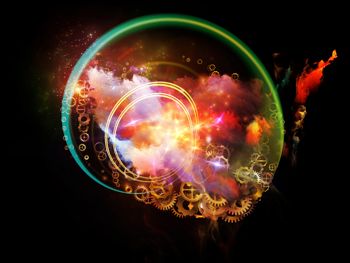A magazine where the digital world meets the real world.
On the web
- Home
- Browse by date
- Browse by topic
- Enter the maze
- Follow our blog
- Follow us on Twitter
- Resources for teachers
- Subscribe
In print
What is cs4fn?
- About us
- Contact us
- Partners
- Privacy and cookies
- Copyright and contributions
- Links to other fun sites
- Complete our questionnaire, give us feedback
Search:
Ada Lovelace: Visionary
by Paul Curzon, Queen Mary University of London

It is 1843, Queen Victoria is on the British throne. The industrial revolution has transformed the country. Steam, cogs and iron rule. The first computers won't be successfully built for a hundred years. Through the noise and grime one woman sees the future. A digital future that is only just being realised.
Ada Lovelace is often said to be the first programmer. She wrote programs for a designed, but yet to be built, computer called the Analytical Engine. She was something much more important than a programmer, though. She was the first truly visionary person to see the real potential of computers. She saw they would one day be creative.
Charles Babbage had come up with the idea of the Analytical Engine - how to make a machine that could do calculations so we wouldn't need to do it by hand. It would be another century before his ideas could be realised and the first computer was actually built. As he tried to get the money and build the computer, he needed someone to help write the programs to control it - the instructions that would tell it how to do calculations. That's where Ada came in. They worked together to try and realise their joint dream, jointly working out how to program.
Ada was a mathematician with a creative flair and while Charles had come up with the innovative idea of the Analytical Engine itself, he didn't see beyond his original idea of the computer as a calculator, she saw that they could do much more than that.
The key innovation behind her idea was that the numbers could stand for more than just quantities in calculations. They could represent anything - music for example. Today when we talk of things being digital - digital music, digital cameras, digital television, all we really mean is that a song, a picture, a film can all be stored as long strings of numbers. All we need is to agree a code of what the numbers mean - a note, a colour, a line. Once that is decided we can write computer programs to manipulate them, to store them, to transmit them over networks. Out of that idea comes the whole of our digital world.
Ada saw even further though. She combined maths with a creative flair and so she realised that not only could they store and play music they could also potentially create it - they could be composers. She foresaw the whole idea of machines being creative. She wasn't just the first programmer, she was the first truly creative programmer.


